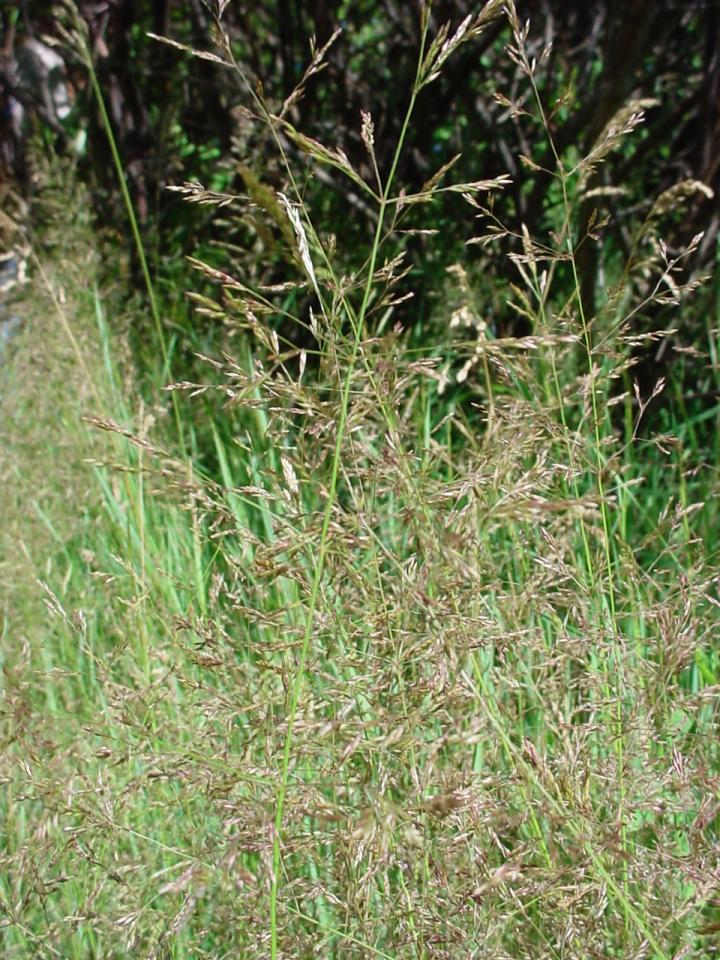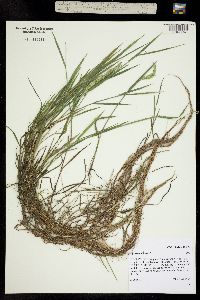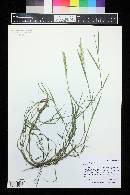|
Family: Poaceae
creeping bentgrass
[ Agrostis alba var. palustris (Huds.) Pers., moreAgrostis alba var. stolonifera (L.) Sm., Agrostis maritima Lam., Agrostis palustris Huds., Agrostis stolonifera var. compacta Hartm., Agrostis stolonifera var. palustris (Huds.) Farw.] Russ Kleinman & Kelly Kindscher |
Much like no. 2 [Agrostis gigantea Roth], and perhaps not sharply distinct, but not rhizomatous, though sometimes with stolons; panicle greenish or stramineous, seldom over 10 cm, narrower, especially after anthesis, with ascending or erect branches; 2n=28-46. Native of Europe, cult. and intr. as in no. 2. Two confluent vars.
Gleason, Henry A. & Cronquist, Arthur J. 1991. Manual of vascular plants of northeastern United States and adjacent Canada. lxxv + 910 pp.
©The New York Botanical Garden. All rights reserved. Used by permission. FNA 2007 Common Name: creeping bentgrass Duration: Perennial Nativity: Non-Native Lifeform: Graminoid General: Stoloniferous perennials with stolons 5-100 cm, rooting at nodes, forming a dense mat with stems 15-60 cm, erect from geniculate base, with 4-7 nodes and smooth sheaths. Vegetative: Mostly cauline blades 2-10 cm long, 2-6 mm wide flat, ligules longer than wide, dorsal surfaces usually scabrous, apices usually rounded, acute to lacerate erose, upper ligules bigger than lower. Inflorescence: Narrowly contracted and dense panicles 4-20 cm long, less than half the length of the stem, 0.5-3 cm wide, oblong to lanceolate, exserted from sheaths at maturity, lowest node with 1-7 scabrous branches, ascending to appressed, some spikelet bearing to base; spikelets lanceolate, green and slightly to strongly purple; glumes subequal to unequal, 1.5-3 mm, lanceolate, acute to acuminate; lemmas 1.5-2 mm, opaque to translucent, smooth, 5-veined, usually unawned but rarely with subapical straight awn to 1 mm. Ecology: Found in moist soils, often along streams and lakesides and areas that temporarily flood from 1,500-10,500 (457-3200 m); flowers July-October. Notes: Often colonizes disturbed areas that are moist, can be confused with A. gigantea, but is distinguished by the presence of stolons. Ethnobotany: Unknown Etymology: Agrostis is from the Latin and Greek names for a type of grass, from Greek agron or agros, field or pasture, while stolonifera means bearing stolons or runners. Synonyms: Agrostis alba var. palustris, A. alba var. stolonifera, A. maritima, A. palustris, A. stolonifera var. compacta, A. stolonifera var. palustris Editor: SBuckley, 2010 |




